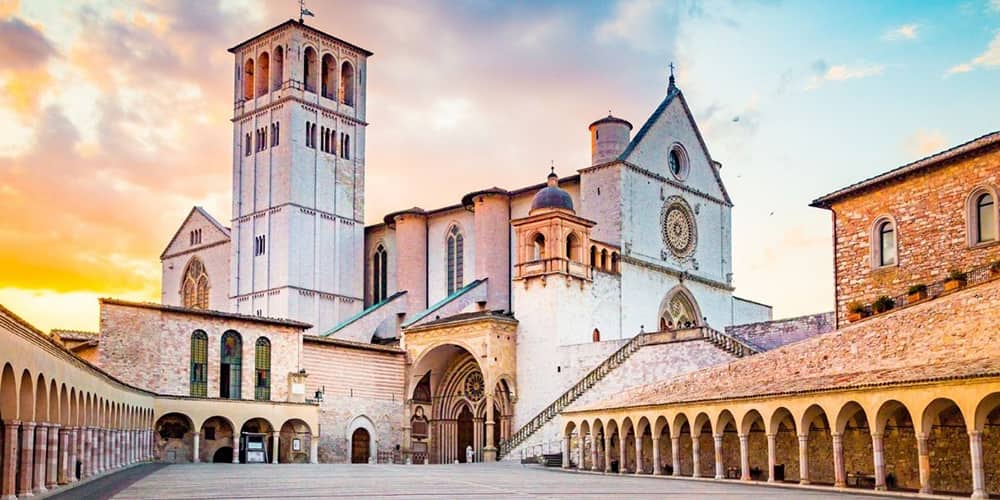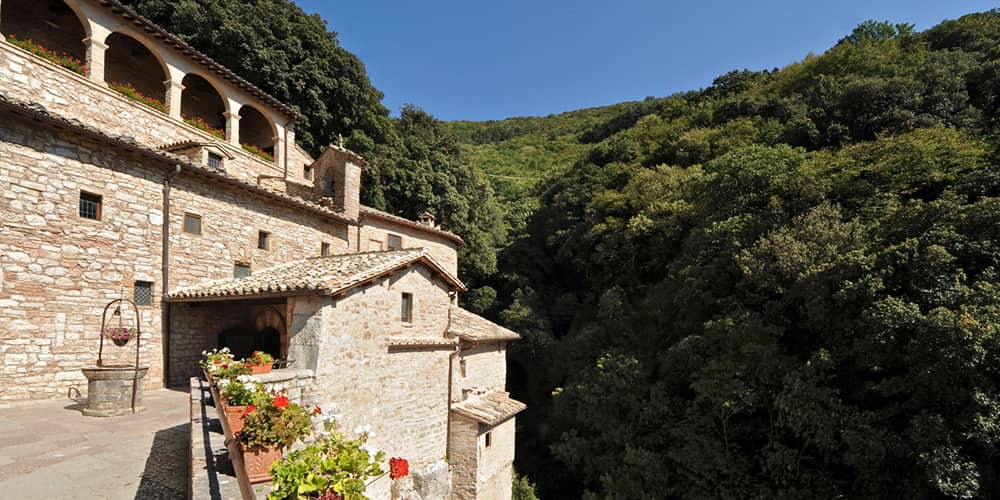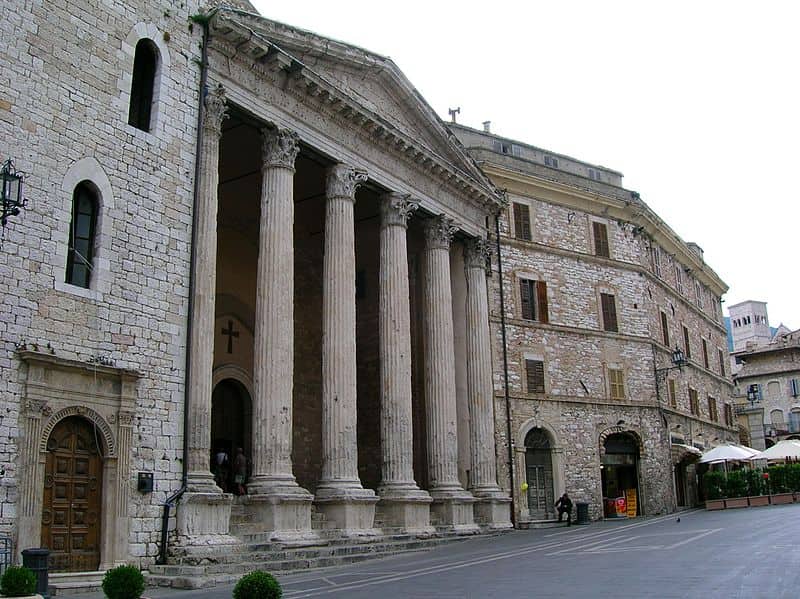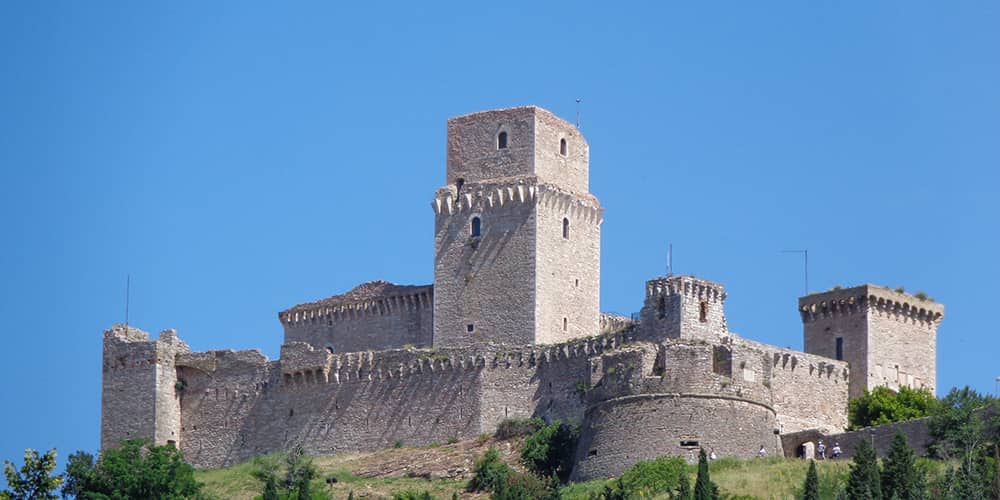"Assisi is a great thing, a town, a city and a sanctuary" wrote the poet Giosuè Carducci to emphasise the richness of the town, which lies not only in its religious history but also in the historical, artistic and cultural heritage scattered in every corner. Let's discover together which are the main monuments to see in Assisi.
Basilica of St Francis

The first stop is the Basilica of San Francesco. Comprising an enormous complex of buildings, the basilica is the sacred place par excellence, inside which the remains of St Francis are kept. The structure is based on two buildings integrated into each other: the Upper Basilica, in Gothic style and soaring upwards, and the Lower Basilica, accessed through a Gothic portal. The two structures are flanked by the Crypt and the Saint's Tomb. The origins of the complex date back to the thirteenth century, according to tradition, the monument stands where Francis decided to be buried shortly before his death. Every square inch of the Basilica has works of inestimable artistic value, Cimabue, Giotto, Lorenzetti, Simone Martini are just some of the artists who have frescoed the walls of the church and have contributed to the importance of the monument. The single nave of the Upper Basilica is frescoed with Giotto's 'Life of the Saint' cycle painted in the first half of the 14th century and with 'Stories from the Old and New Testament' by the school of Cimabue. The Lower Basilica has the function of a sepulchral church and appears in Romanesque style, from here you can access the Crypt built in neoclassical style at the behest of Pope Pius IX in 1818. The Basilica of St. Francis is the jewel in the crown of Assisi, so much so that in 2000 it was included in the UNESCO World Heritage list.
Hermitage of the Carceri

The Eremo delle Carceri is an ancient hermitage located on Mount Subasio, in a wood a few kilometres from Assisi. The sanctuary developed over the centuries, following the choice of St. Francis and his first companions to isolate themselves in the caves of the wood to lead an austere life and devote themselves to prayer. In the 15th century, the Hermitage was enlarged with the construction of the church of Santa Maria delle Carceri and a convent. Inside the structure are works of art such as the fresco "Madonna with Child and St Francis" by Tiberio D'Assisi and the bronze statue dedicated to the saint. Caves and chapels are scattered along the paths of the holm oak wood, which has become a place of pilgrimage where many devotees still retire to contemplate.
Basilica of Santa Chiara

In the historic centre of Assisi is the Basilica of St Chiara, another famous place of worship in the city. The building was constructed shortly after the saint's death, between 1257 and 1265. The church is in Gothic style, similar to the Upper Basilica, the exteriors are embellished by majestic rampant arches that flank the central body of the structure. The interior of the church is decorated with frescoes by Pace di Bartolo, Puccio Capanna and Pietro Lorenzetti. The nave leads to the Crypt, built in the second half of the 19th century, inside which is the urn containing the remains of St Chiara.
Temple of Minerva

Known today as the Church of Santa Maria, the Temple of Minerva is a Roman temple of Republican origin dating back to the first century. The Augustan monument is located in Piazza del Comune and is one of the best preserved Roman temples in the world. Its current name derives from the discovery of a female statue, but after a votive plaque was found, it was discovered that the temple was originally dedicated to Hercules. The façade has six columns with Corinthian capitals. In the Middle Ages, the building was converted into a church before becoming the seat of the municipality in the 13th century. In 1539, at the behest of Pope Paul II, the interior of the temple was remodelled into a Catholic church dedicated to the Virgin. An excellent example of Roman architecture, the monument attracted the attention of the poet Goethe, who came to Assisi twice to admire it. The Temple of Minerva is one of the Franciscan sites on the UNESCO World Heritage List.
Rocca Maggiore

The Rocca Maggiore is a fortress that has dominated Assisi from a height of 500 metres for more than eight hundred years. The fortress consists of the Assisi walls, above which the Maschio stands out. The imposing structure can be reached through the Perlici gate. From the top of the fortress, you can admire the splendid panorama of the Umbrian Valley. The fortress was built in 1365 by Cardinal Egidio Albornoz and over the centuries was enlarged several times with the addition of bastions. The Rocca Maggiore is an irremovable example of 14th-century military architecture, a must-see if you are visiting Assisi.
Assisi
About the author
Written on 15/02/2021



Mirko Migliore
Assisi, the ancient Umbrian village in the province of Perugia, is one of Italy's most important artistic, cultural and religious destinations. The town is famous for being the birthplace of St. Francis, patron saint of Italy, and St. Clare, whose religious deeds have contributed to Assisi's fame as an open-air sanctuary, a pilgrimage destination for every devout Christian.